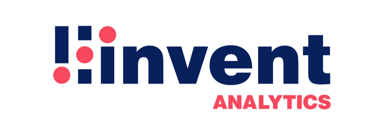Hiring Process
Hiring is one of the fundamental functions of human resources departments. It’s also a crucial process to go through for any organization. Hiring processes are critical for any organization looking for a new teammate, since a company’s team is its most important part. If the wrong method is carried out, you might have to go through all of it from the start.
Building a talented, motivated and effective workforce starts with the right strategical approach to hiring. If you carefully curate the right process, you can have a successful end result and hire the best candidate possible. Join along as we discover the definition, steps, and challenges of hiring processes in this content. 📝
What is Hiring Process?
Hiring process is the systematic, step by step process of identification of needs, research, attracting, recruiting talent. The hiring process may start for several reasons: turnover, company growth and therefore, need for more employees, the lack of a specialist due to the promotion of another one, resignation or many more.
The hiring process, even though it may be complex and take time, is important to bring together and create a component and cohesive team. ✅
Hiring Process Steps
1. Identify the Needs
For the several various reasons we have established beforehand in this article, there may be a need for a new employee. The first step to take in your hiring adventure is to identify the need. Analyze your team thoroughly, identify the hiring need, and decide on the required role.
2. Create the Job Description & Start the Search
After a comprehensive analysis, you now know what you are looking for. Create a compelling job advertising including key points like role requirements, special qualifications you are looking for, desired characteristics, and needed experience.
You also need to mention your company’s background and culture to draw attention from candidates as well as increase future potential interest from the talent pool. This job advertisement should also include information compensation and perks, to clearly define the incoming expectations from candidates.
Advertising the position play a crucial role as well as openly stating what you have to offer. You can choose to do this in many different ways including job portals like LinkedIn or Indeed, social media channels, or the most recently popular system of all, applicant tracking systems. You can do extensive research on which one would be better for your company, and which way of advertising the role can help you reach to a bigger pool of talent.
3. Screen, Shortlist & Recruit
Once you have your pool of applicants, you can now start your screening your candidates. Assess the applicants one by one with your key points, eliminate and shortlist the ones you think will match the job more. Your hiring team will oversee a planned recruitment process.
4. Conduct Interviews
Now that you have narrowed down your applicant pool to a certain extent, you can start interviewing people. Interviews are one of the best cases to truly understand and analyze a candidate. By preparing the right questions to get to know your candidate, you can make the right decision. Interviews are typically done virtually or in-person, depending on the position and the company.
5. Run a Thorough Background Check
Background checks are important since you only get a limited view and understanding through your process. Even if you meet in person with the applicants, you don’t know their background. To keep a positive and safe workplace environment, running background checks is essential. You can conduct a background check through the internet.
6. Reference Check
Reference checks can be a part of background checks. You can contact a previous supervisor or colleague of your candidate’s to confirm the validity of information. Reference checks also play a crucial role on learning about your applicant’s skills regarding the job, affecting your decision in a positive or a negative way. Listening an old colleague will help you see the candidate from their point of view, giving you the chance to assess the person in a different manner.
7. Make a Decision
You have gone through every needed step to get to know a candidate, understand their skills, and evaluations. It is now time to make a decision based on cultural and skill based fit best for the role. You can also choose to decide on a backup candidate as well, taking precautions just in case your top candidate declines for some reason.
8. Offer the Job and Hire the Candidate
You can now make the job offer. E-mails or phone calls are usually preferred to let the candidate know that they got the job. As we have mentioned beforehand in this content, the job advertisement should clearly define the financial and job requirements of the role. You can bargain if the candidate does so, but don’t forget to set a limit for you to move around. After negotiating the terms, you can now hire the candidate.
9. Onboard Your New Teammate
Congratulations! You now have a new teammate. The importance of a good onboarding process is the first and most crucial part of your new adventure. Getting to know the company, the culture, the role in general and the everyday tasks of the role is important from the start. Carefully assemble a good onboarding plan to achieve a good onboarding process.
Common Challenges in Hiring Processes
Attracting and reaching to the right talent pool is important and not very possible in this job market. That’s why it’s important to advertise your job post with the right strategies. You company may also experience lack of reputation and therefore, struggle to appeal top candidates in the field. If you express your company, its culture and mission the right way, you will have no challenges with such problems. ✍️
Final Thoughts
In summary, the hiring process, which involves several steps from assessment to onboarding new teammates, is an essential tool for any business. Employers and job seekers can increase their chances of finding the ideal match by deeply understanding, improving and applying each phase to life. A well-organized hiring procedure guarantees the success of the company and makes the experience enjoyable for all participants.
Want to learn more? Visit Hirex – your go-to guide on everything HR, recruitment & more.
Get a demo
- Quickly find top candidates with smart application management
- Improve team collaboration using built-in communication and workflows
- Offer a smooth candidate experience to strengthen your employer brand
- Count on 24/7 support for a hassle-free hiring process
- Quickly find top candidates with smart application management
- Improve team collaboration using built-in communication and workflows
- Offer a smooth candidate experience to strengthen your employer brand
- Count on 24/7 support for a hassle-free hiring process
"Hirex saved us from hundreds of excel sheets, our hiring process is much easier now."

Trusted by 100+ teams
Get Informed,F.A.Q.
Revolutionize your hiring process with our transformative Applicant Tracking System (ATS.)
Suggested keywords
What is Cultural Fit?
Let's talk numbers - 89% of employers put cultural fit at the top of their hiring checklist. Pretty huge. But wait a second... what exactly does cultural fit mean in today's fast-moving workplace?The ...
Employee NPS Benchmarks
An Employee NPS benchmark is basically a way to see how your company’s employee satisfaction stacks up against others. It helps turn your eNPS score into something useful by giving it context. 📌You'r...
Salary Benchmarking
Salary benchmarking is basically figuring out if what you're paying your team makes sense compared to what others are offering for similar roles. It’s like checking the going rate before you buy somet...















